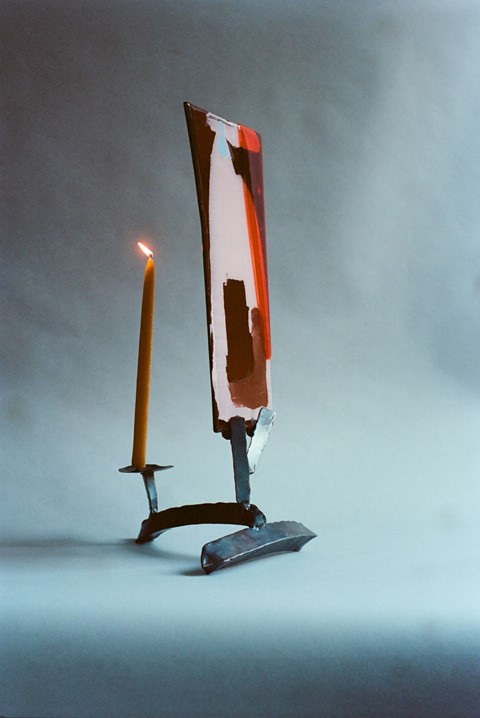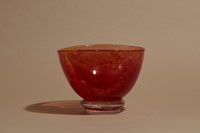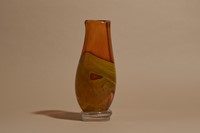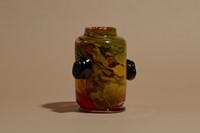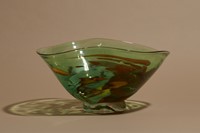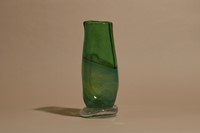“My glass is the glass of the bottle bank”: Kaspar’s lucent, fused glass objects combine a painterly approach, a certain technical naivety and a reverence for the pure alchemy of the craft
- Who is it? Leo Kaspar is a South Devon-based artist and maker working with glass.
- Why do I want it? Fused glass objects which are imagined from the liminal spaces between the everyday and the luxurious, the functional and the ornate.
- Where can I find it? For a catalogue of available works as well inquiries for commission, contact can be made directly with the studio via Leo Kaspar’s website.
Who is it? Leo Kaspar’s artistic practice centred around painting – until a “middle of the night eureka moment” while living in Paris jolted his course towards glass-making. “Of all the things that I found interesting in painting on a formal level, I suddenly thought ‘well what if these ideas could be translated into glass?’,” he recalls. Glass, with its lucent potential, finally enabled him to unlock the ideas that he hadn’t been able to realise in painting. “Things like obfuscation, ambiguity, covering stuff up were suddenly possible,” Kaspar explains, “glass was the happy medium between my background as a painter and these material experiments.”
Now based between London and South Devon, where he lives in an 18th-century Georgian industrial space converted into his home and studio (so he can “live with his work, let it develop over time”), Kaspar crafts his fused glass works via a technique known as slumping. Two-dimensional collages of glass are heated within a kiln so that they fuse together; the final form is dependent on the supporting mould and the pull of gravity. “Unlike glass blowing where you mould hot glass live, with fused glass you literally have to shut it in there and wait to see what happens,” he laughs, “but I guess my entire life approach is about what happens in these liminal, somewhat unknown spaces.”
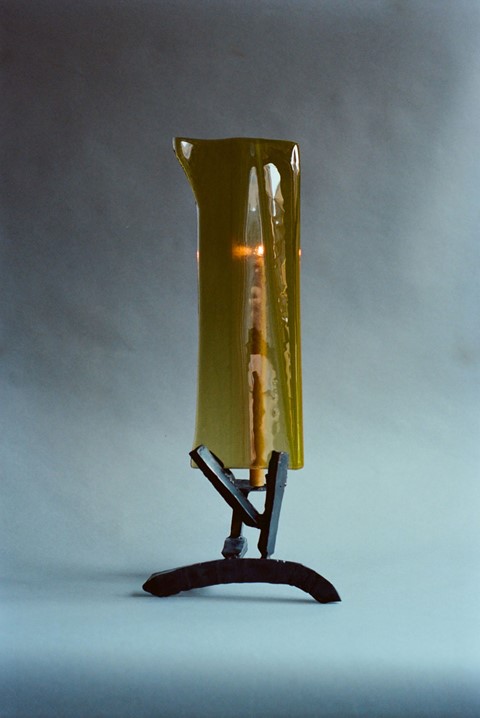
Aside from the help of a few local craftsmen, Kaspar has largely taught himself the art of fused glass, allowing him to “occupy the space of a glass maker in a way that’s perhaps different to how it’s been occupied before.” “I think people have been excited to help me because I’m essentially telling them to throw everything they’ve ever learnt out the window,” he says, “I guess my style has always been guided by this sense of open-endedness and experimentation.” And perhaps it’s this desired technical naivety, which frees Kaspar’s practice from the traditional restraints of glass making, that marks his works with wondrous reverence for the pure alchemy of the craft.
Why do I want it? If the artist’s curiosity for life is piqued by the in-between moments and the liminal spaces, the same can be said of his craftmaking which unfolds between the everyday and the luxurious, the functional and the ornate. Glassmaking, as an art form, is typically associated with “fairly serious and ultimately quite useless things like chandeliers, stained glass, and things to communicate status,” yet Kaspar’s practice is rooted in the functional everydayness of glass.
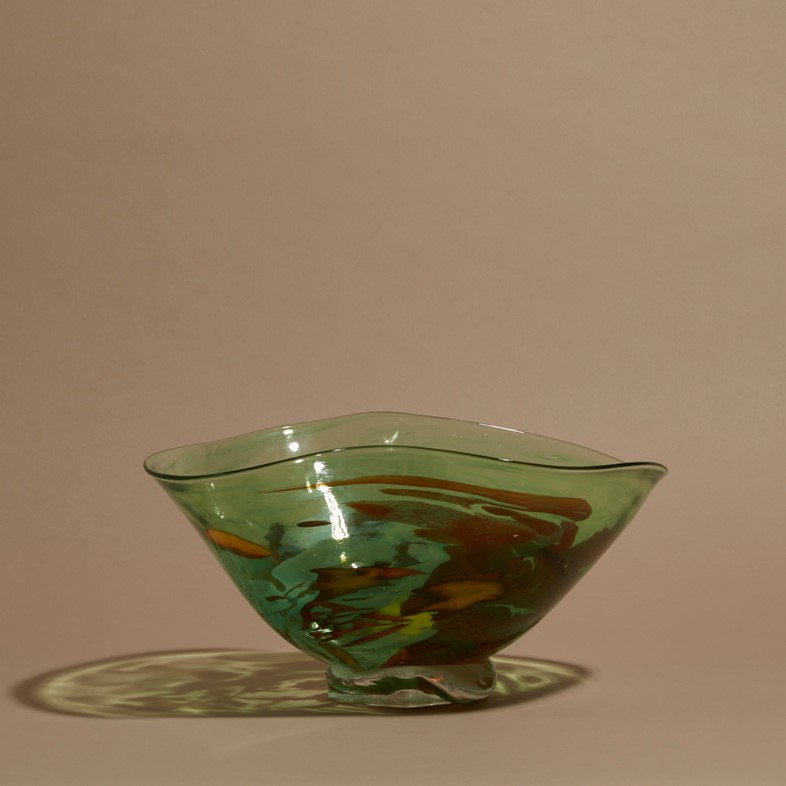
“I guess what I’ve really been trying to do is make that ordinariness a bit more extraordinary and then bring the sort of extraordinariness of glass back down to earth,” he explains. Take, for instance, his glass plates: pockmarked with sublime colour in abstract reference to the painted glass works of religious realms, they are designed to be used for something as banal “eating your beans on toast.” “My glass is the glass of the bottle bank,” he laughs, “it’s the glass of the bottle of wine you pick up on your way home from the local corner shop.”
With his fused glass objects – like mirrors, trays, plates – Kaspar also challenges the commercial expectation that what is functional must also be reproductible and uniform. “In the context of functional objects, people expect them to be the same every time,” he says, “it’s hard to separate it from commerciality.” However, by the unpredictability of its process, fused glass cannot be easily replicated – so much is left to chance. Kaspar is now working with glassblowers to develop a more “bread-and-butter range”, but ultimately he hopes to encourage people to see the beauty in difference, in unpredictability, in imperfection.
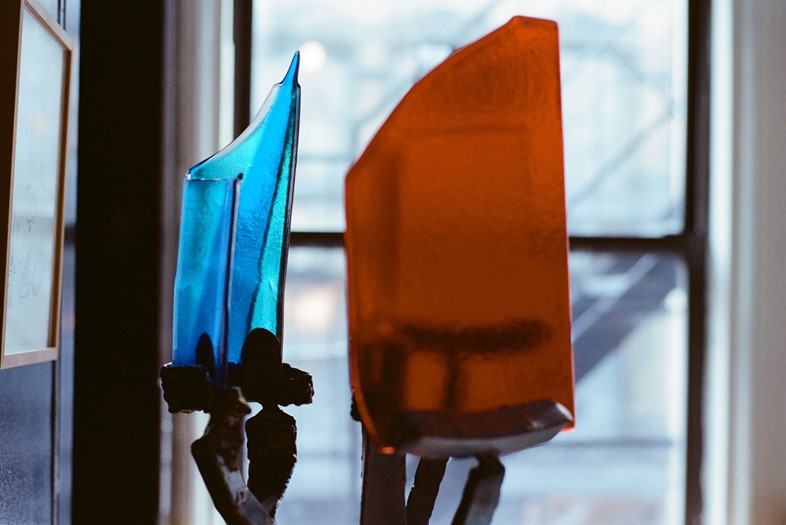
The artist regularly works in collaboration with other artists as well as on commission for site-specific installations. “People will often come to me with a solution, and I really enjoy of the challenge of thinking what is really the question behind it,” he says. “It’s an open-mindedness, a conversation, a back-and-forth to find a practical solution with a creative material.” It was in this context that Kaspar began collaborating with London-based maker and artist Andrew Pierce Scott, who works predominately with metal, although the two now organise shows together with Alex Tieghi-Walker of Tiwa Select. “Working with Andrew, I’d send him stuff that I’d half-designed and he’d turn it into something else,” says Kaspar, “I guess with everything I do, I’m always trying to bring that sort of chance and lack of agency.”
Where can I find it? For a catalogue of available works as well inquiries for commission, contact can be made directly with the studio via Leo Kaspar’s website. His Zaktly series is available from mid-September.
